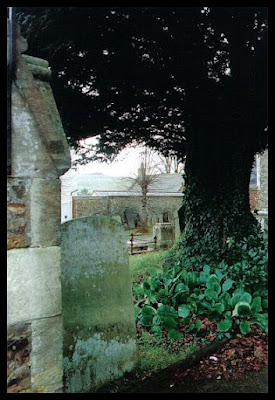Mention was made of the earliest church upon this site in a charter at Salisbury, dated 1240; namely ''Capella de Cernemue', or the Chapel of Charmouth. A new church was built in about 1503, some of which was saved to be incorporated into the present church; notably the Beer stonework which formed the arch of the northern porch.
Once the congregation became too large for the church, it was decided to add another gallery along the north side in 1817, and in 1835 an aisle was to be added. However, once the architect, Charles Wallis of Dorchester, had inspected the building and found it to be dilapidated and unsafe, he suggested to take down the present building and erect a new one. The present church was subsequently rebuilt in 1836, with some of the materials and monuments from the old church saved for the new one.
A Grade II Listed Building, it was rebuilt in the Gothic Style using the vernacular chert rubble for the walls with stone dressings and quoins in the Romanesque short and long style. The window dressings are also made from Beer Stone, from the quarry just above the village of Beer.
Although some of the original fixtures have been saved, many have also been lost. A nice little story is how a portion of the oaken rood screen, which divides the chancel from the nave, was found being used as a clothesline prop in a cottage garden. That particular piece has since been installed in the chimney-piece of the Old manor house opposite the church.
At the risk of sounding disrespectful - and please excuse my sense of humour, lol - but the gravestone above always reminds me of Lisa Simpson whenever I see it. I don't recall seeing it close-up, but I did think that the top is the shape of a six-sided star. However, on looking at the photo properly it would have eight sides, not six, so maybe a decoration rather than depicting a Jewish burial as I'd originally thought.
Many of the gravestones look ancient from weathering, but most of them date from after 1836. One of the oldest is dated 1784. A long row of headstones are ranged along the churchyard wall on the eastern side.
You can probably tell that I was rather enamoured with these. I took some more photos of them on my second visit too, which I'll post at the end with some other photos.
And with more on the western side.
The South door at the rear, below. The North door is the main entrance, which is unusual as it was known as the Devil's Door and never used. North was considered to be the direction of godlessness - which is why women were traditionally seated on the North side!
Oddly enough, there are quite a few churches in this area that have the entrance on the north. I'm not sure if it was because during Victorian rebuilds and renovations the usage of the doors was changed, and that the superstition was no longer adhered to (being Mediaeval), or whether it says something about the people of the South-West!
Having visited twice now, once in 2009 and again in 2011, I'm surprised at the small amount of photos I have of the interior. Probably because it didn't really grab me at the time and it hadn't been long since I'd started taking photos of churches along with my usual kinds of buildings, only taking photos of those which stood out and prefering the exterior architecture.
A stepped lancet east window in the early Gothic style with 14th century style screens either side of a retable altar in the later, Decorated style. I can't really tell from my photos, but the screens may be sedilia, or more likely an imitation of them. They provided seating for the officiants during Mass of the time before the Dissolution - now called Communion in the Church of England.
The interior consists of arcades to either side of the nave with tall, octagonal columns.
The roof inside consists of a ceiling canted upwards with arch-braces and iron tie-rods between the ends of what has been made to emulate hammer beams.
The font, below, is a lovely marbled octagonal shape in the perpendicular style.
One of the features which really stood out for me are the stained glass windows. They are superb...so bright and colourful, and my photos really don't do them justice.
Interestingly, the original church had
been dedicated to St Matthew, and no-one knows why exactly, but the new
church was thereafter called St Andrew's...possibly due to Charmouth being a coastal town with fishing the main local trade at the time.
On that second
visit, someone was playing the organ; a lovely lady who kindly invited me
to take photos inside the offices beneath the organ gallery.
I particularly
liked these memorial windows in the rear offices.
And to finish off, a few more photos outside.
And last of all, I took these photos of the gate with the church in the background. There was a spiders web with a spider in the centre on one of the spaces between the curlicues, but unfortunately it didn't show on the photos, apart from a tiny black speck on the left one.
And there we go! :)



















































No comments:
Post a Comment